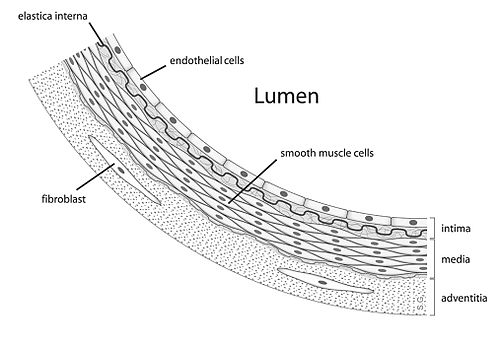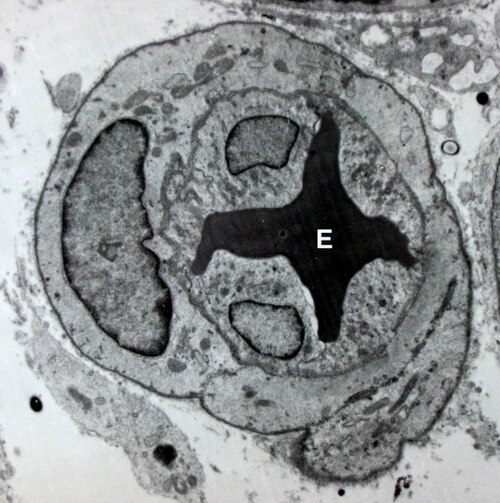Endotheliumnoun
(anatomy) A thin layer of flat epithelial cells that lines the heart, serous cavities, lymph vessels, and blood vessels.
Endotheliumnoun
The thin epithelium lining the blood vessels, lymphatics, and serous cavities. See Epithelium.
Endotheliumnoun
an epithelium of mesoblastic origin; a thin layer of flattened cells that lines the inside of some body cavities
Endothelium
Endothelium is a single layer of squamous endothelial cells that line the interior surface of blood vessels, and lymphatic vessels. The endothelium forms an interface between circulating blood or lymph in the lumen and the rest of the vessel wall.
Epitheliumnoun
(anatomy) A membranous tissue composed of one or more layers of cells which forms the covering of most internal and external surfaces of the body and its organs: internally including the lining of vessels and other small cavities, and externally being the skin.
Epitheliumnoun
The superficial layer of cells lining the alimentary canal and all its appendages, all glands and their ducts, blood vessels and lymphatics, serous cavities, etc. It often includes the epidermis (i. e., keratin-producing epithelial cells), and it is sometimes restricted to the alimentary canal, the glands and their appendages, - the term endothelium being applied to the lining membrane of the blood vessels, lymphatics, and serous cavities.
Epitheliumnoun
membranous tissue covering internal organs and other internal surfaces of the body
Epithelium
Epithelium () is one of the four basic types of animal tissue, along with connective tissue, muscle tissue and nervous tissue. It is a thin, continuous, protective layer of cells.














